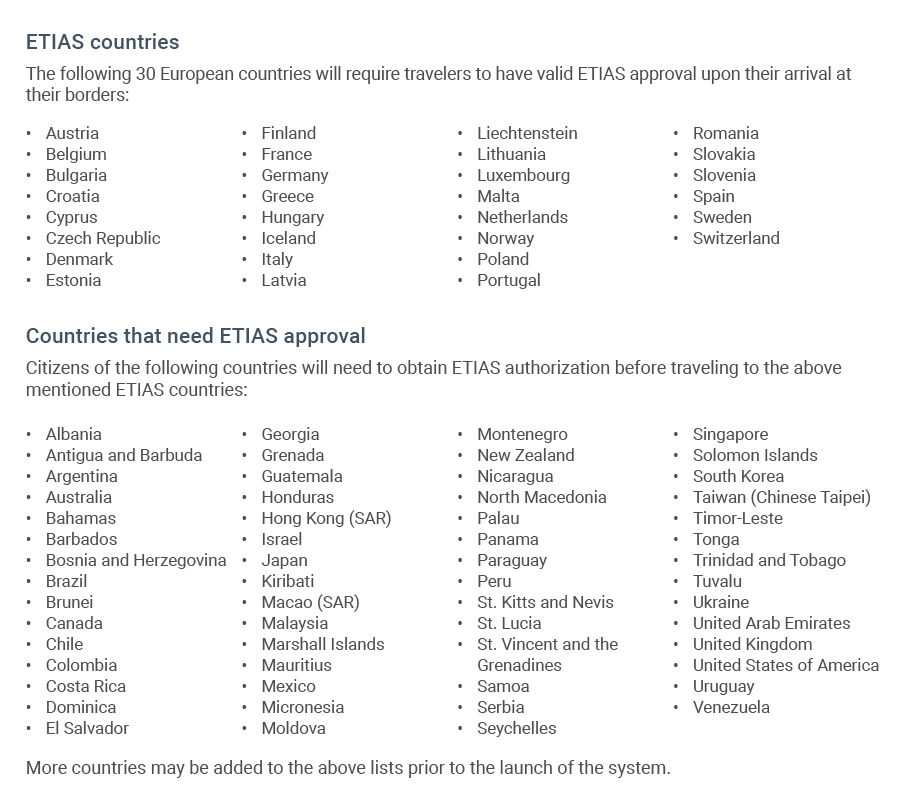Numerous countries across Europe are gearing up to introduce two new border management systems that will impact on travel into Europe: the European Travel Information and Authorisation System (ETIAS) and the Entry/Exit System (EES).
ETIAS is an electronic travel authorization system that is scheduled to be introduced in May 2025 (NOTE: this has subsequently been pushed back, ETIAS is now expected to launch in 2026, according to the revised timeline) to pre-screen and monitor the movement of foreign nationals who currently do not need a visa to travel to the 29 countries that constitute Europe’s Schengen Area, as well as Cyprus.
There have been numerous delays in implementing the system but when finally initiated, there will be a 180-day grace period before travelers will require ETIAS approval.

ETIAS is designed for travelers from visa-exempt countries who plan to visit these 30 European countries for short-term purposes such as business, family visits, tourism, or transit. It will not apply to travelers from countries that require a visa to enter the Schengen Area or Cyprus, as the visa acquisition process already includes the relevant screening.

ETIAS is similar to other digital entry systems already in place in several countries, such as the USA’s Electronic System for Travel Authorization (ESTA) and the Australia Electronic Travel Authority. Generally, these systems are referred to as electronic travel authorizations (ETAs).
Like other ETAs, the ETIAS travel authorization is not considered a visa. Rather the system is a pre-travel screening tool that will be mandatory for all travelers from visa-exempt countries wishing to travel to the 30 European countries listed above.
The ETIAS application process will include the following steps:
An ETIAS travel authorization will be valid for up to three years or until the traveler’s passport expires, whichever comes first. During this period, it will permit multiple entries for short stays of up to 90 days within a 180-day period.
Before ETIAS can be launched, all participating European counties will be introducing the Entry/Exit System (EES). This automated system will require identity, travel document data, and biometric checks for all non-EU travelers arriving for a short stay.
The EES is distinct from ETIAS in several key ways:
ETIAS and the EES are ambitious, large scale, digitization projects that will transform travel and border management in Europe’s Schengen area. As border security and control becomes an increasingly prevalent topic across Europe, the systems will allow participating countries to leverage technology both to reduce security threats through the pre-screening process and to enable faster processing of larger volumes of travelers.